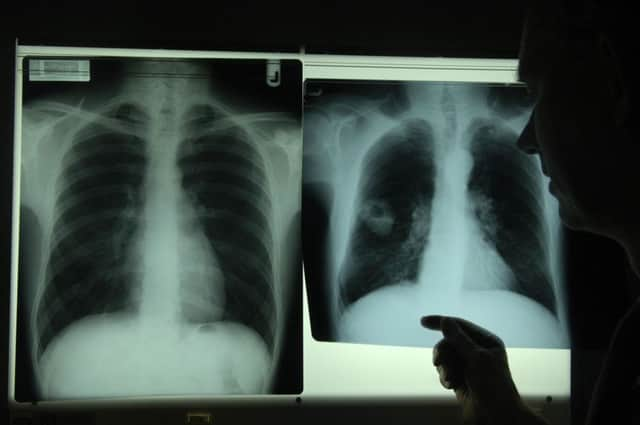UK cancer sufferers have among lowest survival rates


The latest comparisons of cancer patients’ survival and care in Europe up to 2007 showed that although more patients are surviving for at least five years after diagnosis, there are large variations between countries.
It revealed lower survival from all cancers in the UK, Denmark and Eastern Europe than in neighbouring countries.
Advertisement
Hide AdAdvertisement
Hide AdLung cancer had a European average five-year relative survival of 13 per cent but just 9 per cent in the UK and Ireland; ovarian cancer an average 38 per cent but 31 per cent in Ireland and the UK, stomach cancer average 25 per cent but 17 per cent in Ireland and the UK, pancreas average 7 per cent but 5 per cent in Ireland and the UK, and brain average 20 per cent but 18 per cent in Ireland and the UK.
And survival rates are particularly significant in cancers of the blood.
The average five-year relative survival for Hodgkin lymphoma was the highest of all the blood cancers at 81 per cent but 79.4 per cent for Ireland and the UK.
By contrast, average five-year survival for chronic myeloid leukaemia was 53 per cent but this varied enormously according to age, with the geographical variation the greatest of all the blood cancers at 33.4 per cent in Eastern Europe versus 51 to 58 per cent in the rest of Europe.
Dr Milena Sant, from the Fondazione IRCCS Istituto Nazionale dei Tumori in Milan, Italy, said: “In general, five-year relative survival – survival that is adjusted for causes of death other than cancer – increased steadily over time in Europe, particularly in Eastern Europe, for most cancers.
“However, the most dramatic geographical variations were observed for cancers of the blood where there have been recent advances in treatment, such as chronic myeloid and lymphocytic leukaemias, non-Hodgkin lymphoma and two of its sub-types.
“Hodgkin lymphoma was the exception, with smaller regional variations and a fairly good prognosis in most countries.”
The findings based on an analysis of data from the EUROCARE 5 based on more than 10 million patients diagnosed from 1995 up to 2007 and followed up to 2008, with an unprecedented coverage of 50 per cent of the European population.
Advertisement
Hide AdAdvertisement
Hide AdThey are published in 11 papers in the European Journal of Cancer simultaneously with presentation at the European Cancer Congress.
Another analysis of the data reported in the EJC papers looked at overall survival for all cancers in Europe, taking data from over 7.5 million cancer patients in 29 European countries.
Dr Sant said: “Survival correlated with gross domestic product (GDP) and total national expenditure on health (TNEH): countries with recent higher increases in GDP and TNEH had a higher increase in cancer survival.”